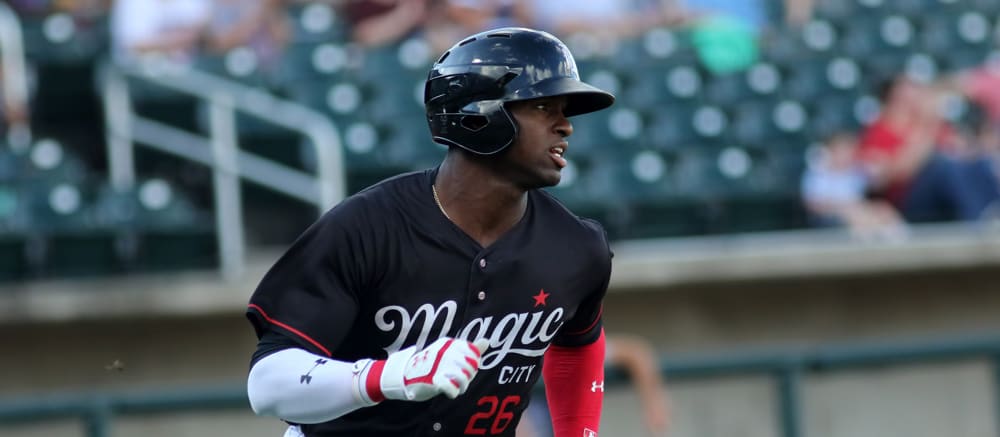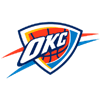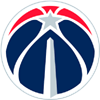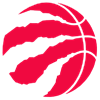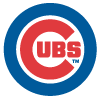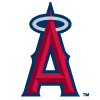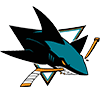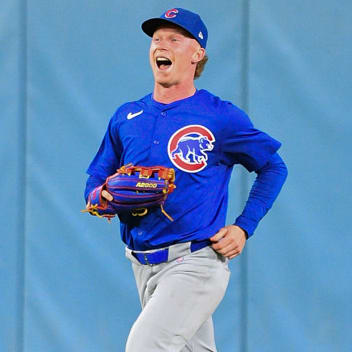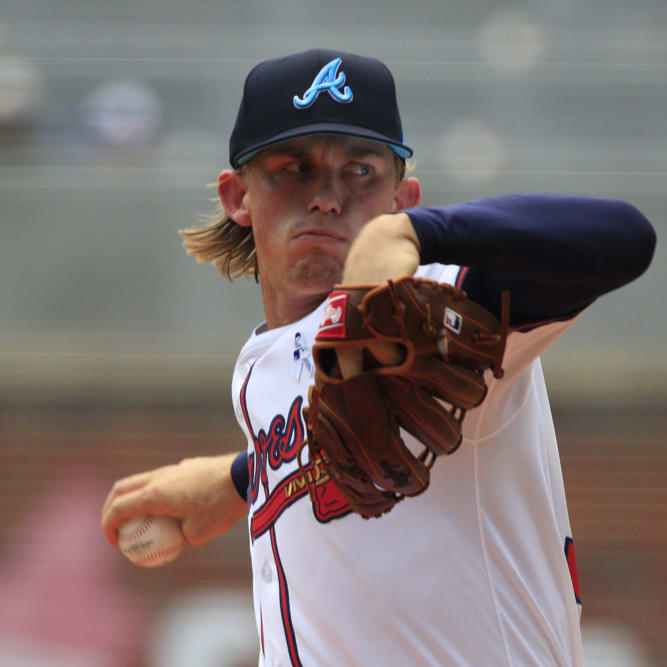One of the benefits of playing in keeper and dynasty leagues is that there's exactly as much down time as you want there to be. If you want to put your team away from October through about March and not think about it, you can. If you want to spend those long winter months breaking down possible options for the final spots on your keeper list and combing YouTube for clips of prospects you're thinking about drafting, you can do that too. The offseason only represents those weeks when stats aren't being accumulated; you can still put in the work to make your team better – and part of that work, naturally, involves making trades.
As it happens, this has been a busier offseason than usual for me on the trade front. I want to look at two deals in particular in leagues with very different formats, both to look at how assets can get valued during the offseason, and to look at things you should consider for your own team before pulling any triggers.
You Traded WHO???
Last season in the original RotoWire Staff Keeper League – there are at least three of them now, but this is the granddaddy – my Wakanda Panthers (yeah, like your team name is so much better) fell a little short of expectations but still finished in the money for the second straight year, which I guess I should be happy with considering Ryan Rufe was busy polishing off a three-peat. It's an 18-team 5x5 mixed roto format with roster rules that make elite prospects extremely valuable – we can keep up to 10 minor leaguers for as long as we want so long as they haven't yet played more than 20 games in the majors. Even in the season one passes the 20-game threshold, we can still leave him stashed on our farm until the following campaign, when their salary starts at $3, or activate them for the remainder of the current year with a $0 contract value, which can be very useful given that we have a hard salary cap of $360. It's a system that produces a sky-high inflation rate at the auction table, as so much young talent gets protected at well below market rates.
Unfortunately, I was losing a lot of production this offseason in expiring contracts. Luis Castillo, Jonathan Villar, Marcell Ozuna, Eddie Rosario, Wilson Ramos, Robbie Ray... all of them were coming off the books. I still have some pieces for a decent core – for instance, I have Ozzie Albies and Jose Berrios heading into their option years, who I'll certainly extend, Mike Soroka just beginning his $3 rookie contract in 2020, and Nico Hoerner sitting on exactly 20 MLB games and thus still eligible for a minors slot – but overall there just wasn't enough talent in place to make me think I was going to be really competitive. And in a league like this, if you aren't competing, you're rebuilding, whether you're willing to admit it or not.
I did, however, have one shining jewel in my farm system beyond Soroka, and that was Luis Robert.
(In the interests of full disclosure, I almost didn't have him. I grabbed Robert in our 2018 minor-league draft, but after his rough introduction to stateside ball, I'd offered him around for more immediate help last offseason. I couldn't give him away. As a result I figured I'd give him one more year to prove himself before cutting bait. If he stays healthy, I thought, maybe he'll start to flash some of his upside...)
Robert's credible impersonation of Ronald Acuna Jr.'s 2017 campaign saw the Cuban outfielder rise from High-A to Triple-A, posting an OPS of .880 or better at each stop while displaying power, speed, and the potential for premium defense in center field. In the process he became one of the top prospects in the game... and left me with something of a dilemma. Assuming Robert made his debut in 2020, an assumption that became a near-certainty when he followed in Eloy Jimenez's footsteps and signed a major-league deal with the White Sox before ever playing a game in the majors, his window for dirt-cheap production (2020-22) before I'd have to extend him would mostly coincide with the years I'd be rebuilding. And even if Robert was the next Acuna, adding him to my existing young talent wouldn't be enough to tip the scales away from a tear-down.
Fortunately, at the end of the 2019 regular season, one of the teams just coming to the end of their own rebuild phase sent out a blanket offer to the league: they possessed three picks in the top five in the 2020 minor-league draft, including the No. 1 pick, and would be willing to trade two of them plus a throw-in prospect for an elite, major-league ready talent still in the minors. As I'd discussed possible Robert trades with them earlier in the year that went nowhere once it seemed clear he was headed for a breakout, I figured that while they made the offer to the entire league, there was one elite, major-league ready talent in particular they had in mind.
I thought about it. Two premium picks for Robert was enticing, but he's ready now, while anybody I'd be drafting would probably carry additional development time and thus additional risk. A bird in hand, etc etc. On the other hand, I'd already determined he was a little out of sync with my current phase in the success cycle, so trading one top guy for two potentially top guys who better fit that cycle seemed like it could be a win.
I approached it from another angle. Who were the top five talents actually available in our league, barring any offseason helium? Looking at our Prospect rankings, I found the following (I'll use the current rankings for simplicity's sake, but the rankings in October weren't much different): Robert was No. 5, and everyone ahead of him was rostered. However, Dylan Carlson was available at No. 6, as were Jasson Dominguez (No. 8), Andrew Vaughn (No. 9), CJ Abrams (No. 11) and Adley Rutschman (No. 18) – although truth be told, after I did further research on the current prospect crop, I wound up with a name other than Abrams in my personal top five. Regardless, making the deal would guarantee me two of that group, and that seemed like a more than reasonable return in terms of actual talent.
There were also some lingering concerns about Robert I couldn't shake. Maybe it was his injury-plagued 2018, or his less-than-stellar plate discipline during his minor-league ascent, but I didn't quite view him as the same kind of can't-miss guy Acuna was before he debuted. I could easily see Robert struggling to make adjustments for a while.
A few emails later, and the deed was done: Luis Robert for picks 1.1 and 1.5 in the 2020 draft, plus Leody Taveras (who I probably won't keep, only to somehow wind up with him yet again because he's my personal albatross... it's a long story). If I'd cut Robert loose last offseason he almost certainly would have gone 1.1 in 2020, so getting another top-five pick for him as well seems like an ample reward for my patience. Of course I could end up really, really regretting it if he emerges as MLB's next superstar, but I now have three first-round picks in the draft and, including prior trades, six picks in the top 50. That should provide a heck of a foundation for the next competitive Panthers squad.
The question now, of course, is who do I take at 1.1? The top J2 prospects in recent years have all been awesome, so I should probably go with Dominguez. Then again, locking up the next great catcher in an era where even finding a half-decent one can be tough would give me a huge advantage over the field, so perhaps Rutschman is the way to go. On the other hand, swapping Carlson – another athletic, multi-category, big-league ready outfielder – in for Robert could mean I essentially landed pick 1.5 for free if they wind up having similar value... hmm. Well, I've still got about six weeks to figure it out.
Trading elite prospects always feels painful, because we all like to focus on the upside with them. Keeping your eyes on the end goal – assembling the best, most cohesive and competitive roster, not just having the shiniest new toys – can help you get fair value if you do decide, for whatever reason, that parting with them has merit. Had I been in position to gear up for another push to the top of the standings, I almost certainly would have kept Robert, but in this case the timing felt right to move him.
Reloading Not Rebuilding
The other trade doesn't involve quite as sexy a prospect name, but it does illustrate what should be a standard tool in every good keeper GM's arsenal – the reverse dump deal.
Last year in my home AL-only 12-tm roto league, I finally took home the title (huzzah!) after coming in second the prior two seasons. At the end of that championship push, I wound up with a team full of pricier studs that still clutter up my offseason roster: Xander Bogaerts at $30, Eddie Rosario at $28, George Springer at $35, Nelson Cruz at $25, Gerrit Cole at $31, Justin Verlander at $35, even FAAB snag Emilio Pagan at $22 all remained under contract for 2020. There was no way to keep them all – well, in theory I could, if I wanted to be in the dollar days portion of the auction right from the jump – but that doesn't mean I couldn't potentially trade some of them away and get back an infusion of cheaper players to help replace the low-cost talent I had to give up in the deals that landed some of those studs.
One team was signalling that they had room to pick up an expensive, top-shelf hitter. Perfect. I took a look at their roster to see who they had I might be interested in. Matt Olson at $6 stood out... oh wait, he was the centerpiece of the deal that got me Verlander last summer, plus Jose Ramirez's expiring contract. I'm not going to get him back. Moving on. A $1 Jose Leclerc was intriguing, as was a $3 Jose Urquidy. Hmm. Checking his farm system, one more name popped out: Evan White at $8.
Now, that's not a dirt cheap salary, but given the league rules, his actual salary doesn't matter so much for this season. We can keep up to three players who qualified as minor leaguers as part of our 14-man freeze lists heading into the auction, and the salary of those prospects is considered "below the line" -- as in, it doesn't count towards our auction dollars at all. Once the prospect gets called up to the majors during the year and we put him in an active roster slot on our fantasy squad, only then does his listed salary actually count towards the in-season cap.
As a prospect, White is solid. Maybe he doesn't have the power upside you want from a first baseman, but he looks like he'll supply a decent batting average and might still run into some homers, maybe producing something in the range we're projecting for Nate Lowe (.276-16-63-64-0). In AL-only, that'll do just fine. More importantly, the Mariners followed in the footsteps of teams like the Phillies (Scott Kingery) and White Sox (Robert and Eloy) and signed him to a six-year big-league deal before he'd even made his debut, all but assuring White of a starting job in Seattle in April, unless he really blows it this spring.
Adding a potentially useful CI bat who counts for $0 at the auction? Yeah, I'd take that in exchange for a player I wouldn't have had room for anyway.
I sent off a list of players I'd be interested in for one of my pricey hitters, and surprisingly, instead of a 1-for-1, the other team decided they had room for two of my guys and suggested a 2-for-2. The end result? I swapped out Springer and Cruz (who I would have been torn on keeping, as he's at a solid price but of course locks up the Ut slot in the auction) and got back White and Urquidy, plus a modest pick upgrade in our reserve draft. It was a version of the kind of dump deal you see at the deadline in keeper leagues all the time – one team has cap space and wants big names to anchor their freeze list, while the other has too many big names and needs cap space. On my end, my decisions on who to protect get simpler, I gain a lot of auction flexibility, and I might just be set up for a fourth straight money finish.
While in deeper mixed formats, you have to keep a careful eye on where you are in the success cycle and make sure you aren't zigging when you should be zagging, in shallower leagues (mixed or only) careful roster building can allow you to ride a wave for a long time. There are always ways, whether through careful auction budgeting, preemptive FAAB bids, or picking them up in trades, to keep cheap talent flowing through your roster year-round, and that cheap talent is the lifeblood of success. Frankly, everybody is going to have $30 studs on their roster, at least to begin the season. What sets the champs apart from the rest is the production they get from the $8 players.


